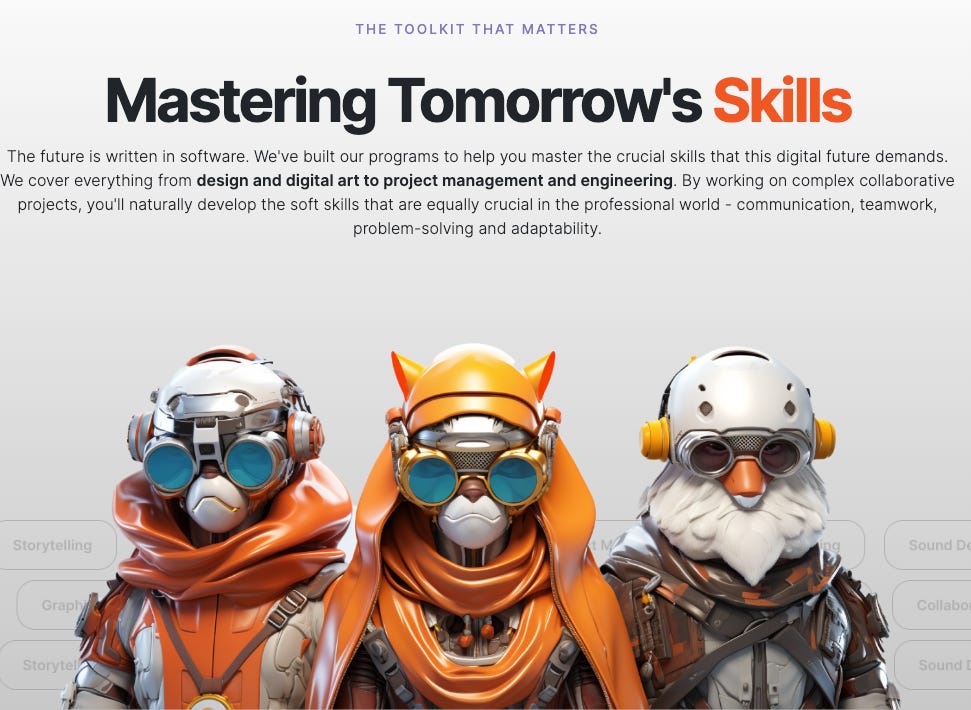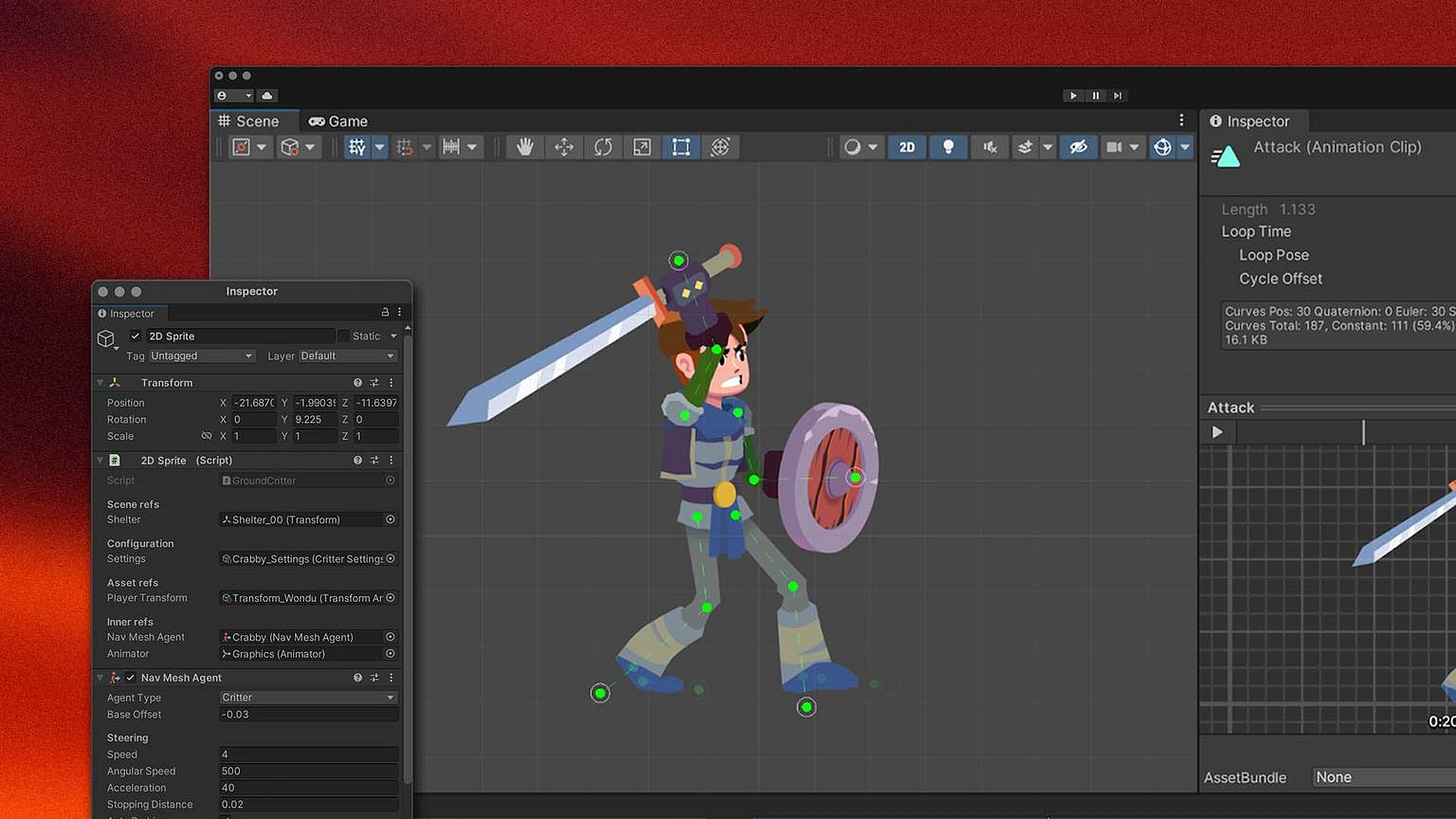The Endless Power of Games
Leveraging games as both a medium and object of learning
As a medium, games can be a very powerful tool for learning. In fact, it’s my hope that in the future teachers will eventually be akin to game designers that construct learning systems with moving parts. One of my favorite problems is indeed centered on how can we make learning difficult subjects a lot more like playing games.
But what if building games in and of itself was a great motivator for learning? Studies around the world show that up to 90% of children are gamers and an overwhelming majority of them want to build games. Yet, making video games today is still incredibly difficult.
Matt Dalio at Endless is on a mission to change that. I sat down with Matt to hear more about the work they do at Endless and their journey to date.
(The interview has been edited for clarity)
What is Endless?
At Endless, we are focused on helping everybody get a better life through mastery of key digital skills.
We do this by harnessing the power of games because that is what children want to do - they want to build games.
On a practical level, Endless is a pair of organizations - a company and a foundation. Endless Studios is a for-profit company that provides training on these critical skills. It is what we call a distributed youth game making studio.
We understand that a lot of people lack access to the tools and infrastructure to benefit from our programs. That’s why the Endless Foundation ensures that children around the world have affordable access to the tools to learn these skills - this includes devices and our own operating system.
Why did you start Endless?
We're in an era where the world faces disruption not just from software, but from its broader implications. We stand at a crossroads where our future could unfold as either the best or the worst version of humanity. This hinges significantly on whether people can access meaningful employment opportunities. A world where people are equipped for the workforce is inherently more stable.
Our goal with "Endless" is to ensure that everyone has the necessary skills to navigate and thrive in this landscape of perpetual change. Teaching digital skills, which are complex and take years to master, is particularly challenging yet essential. Doing that through building games creates the most engaging and enjoyable way possible.
How can we win learning games? How do you envision bridging the gap to make educational games as compelling as mainstream consumer games without sacrificing educational value?
Reflecting on the state of learning games today, it's clear to me that they suck.
Interestingly, some of the best games ever developed—like SimCity and Civilization—weren't specifically designed for educational purposes but inherently possess great educational value. This leads to a crucial question: why do learning games often fall short?
Firstly, the core issue is that many educational games are developed by educators, not seasoned game designers. The objectives differ greatly; where game designers focus on engagement, educators aim for educational outcomes. This often results in games that feel like a forced blend—just like "broccoli with chocolate on top."
Secondly, building a top-tier game requires significant investment, much more than I initially realized. Since learning games have not been traditionally profitable, attracting investors has been a challenge. This financial hurdle is a major barrier to elevating the quality of educational games.
Thirdly, the distribution channels and hardware compatibility for educational games are inadequate. Many schools rely on basic hardware like Chromebooks, which lack advanced graphics processing capabilities. This severely limits the type of games that can be effectively distributed and played in educational settings.
To bridge the gap and make educational games as compelling as mainstream consumer games, we must start by involving expert game designers in the creation process, ensuring the games are not only educational but genuinely engaging, and finally explore new models for monetization that could attract more investment.
It's about rethinking how we approach the design and distribution of educational games to unleash their full potential.
In one of your pieces, you say that “games are basically giant learning engines," could you elaborate on the specific design principles or features that make games so effective at teaching?
Making to learn is a great engine for learning; if you can make a game, you inherently learn to make software. The act of creating a game teaches many core life skills as well beyond the key technical ones - particularly when it involves collaboration.
Furthermore, the presence of multiple open source projects to engage with allows learners to choose their skill paths, effectively turning the process into a community of practice. This community not only fosters learning but also enables the creation of a vast amount of content at various levels of quality.
Imagine a tool as simple as Minecraft, yet as powerful as other gaming engines. Such a tool would serve as an excellent on-ramp to game creation, drawing people into a much larger, more accessible community of practice.
That's precisely what we are striving to build—the tools and the community that can bring this vision to life.
You are developing your own game development engine on top of Unity. Why is that? What can you tell us about your engine?
We didn't initially set out to build our own game development engine. Our original intention was to utilize the existing tools on the market, many of which are truly excellent but also quite intimidating.
In our attempts to introduce children to these tools, we found a staggering 90% dropout rate, which highlighted a significant barrier to entry. On the other end of the spectrum, there are simpler tools like Scratch, but let's be honest—nobody is truly excited to play games made on Scratch. And while tools inspired by Minecraft are fun, they don't necessarily impart real, transferable skills.
This realization brought us to identify a substantial gap between playful, introductory platforms and high-end, professional tools. There's a need for a middle ground—something that bridges this gap effectively. After kids move on from Minecraft, what's next for them? We needed an answer to that question, and that's why we decided to develop our own engine.
What are the key challenges you faced in making advanced game development accessible to beginners, and how have you addressed them?
One of the key challenges we've faced in making advanced game development accessible to beginners is simplifying complex actions without stripping away their power.
For example, grid-based placement can be surprisingly tricky to manage in a typical game engine. To address this, we engineered our platform so that everything intuitively clicks into place—the engine handles the complexity, making the development process seamless for the user.
Additionally, automating game mechanics is crucial. Take, for instance, an irrigation game mechanic—automating this allows beginners to implement sophisticated systems without needing to understand every underlying detail right away.
Our engine also enables users to string levels together, creating much more complex games. This progression is akin to moving from using a basic word processor like Word to a more dynamic and collaborative platform like Google Docs.
We are actively distributing this game engine through our website and are in the process of making it available on app stores. We're also collaborating with schools to integrate this tool into their curriculums, allowing educators to use games as a medium to teach various subjects and concepts.
My hope is that this direct application in educational settings not only enhances learning but also democratizes game development, making it a part of everyday educational experiences.
I hope you enjoyed the last edition of Nafez’s Notes.
I’m constantly refining my personal thesis on innovation in learning and education. Please do reach out if you have any thoughts on learning - especially as it relates to my favorite problems.
If you are building a startup in the learning space and taking a pedagogy-first approach - I’d love to hear from you.
Finally, if you are new here you might also enjoy some of my most popular pieces:
The Gameboy instead of the Metaverse of Education - An attempt to emphasize the importance of modifying the learning process itself as opposed to the technology we are using.
Using First Principles to Push Past the Hype in Edtech - A call to ground all attempts at innovating in edtech in first principles and move beyond the hype
We knew it was broken. Now we might just have to fix it - An optimistic view on how generative AI will transform education by creating “lower floors and higher ceilings”.





I teach intro to programming at an art school and every semester the number of students interested in building games grows. Their work definitely demonstrates that building games (or any project you care about!) is a great way to learn. They’ve built impressive games of many different kinds, from side scrollers, to escape rooms, and visual novels.
I teach p5.js for most of the semester, so I encourage my students who are building games to use an open source library built on top of it called p5.play. It simplifies things like collision detection and animation, and provides a physics engine. I’ve had several students express an interest in learning unity, but I know from firsthand experience how challenging it can be - definitely looking forward to what Endless will build.
Love this post. Would be great to chat to the guys at Endless.I just wondered if you or anyone in your network might be able to introduce us to investors who are interested in an innovative mobile edtech game. Our edtech pivots have eventually led us to a really exciting game concept that hides learning within a deeply immersive adventure game where the flow of gaming neatly coincides with the flow of learning/quizzing. We are partnered with the publishers of the Beast Quest book series for branding and the studio Stepico for the build. We are now looking to structure a seed round.